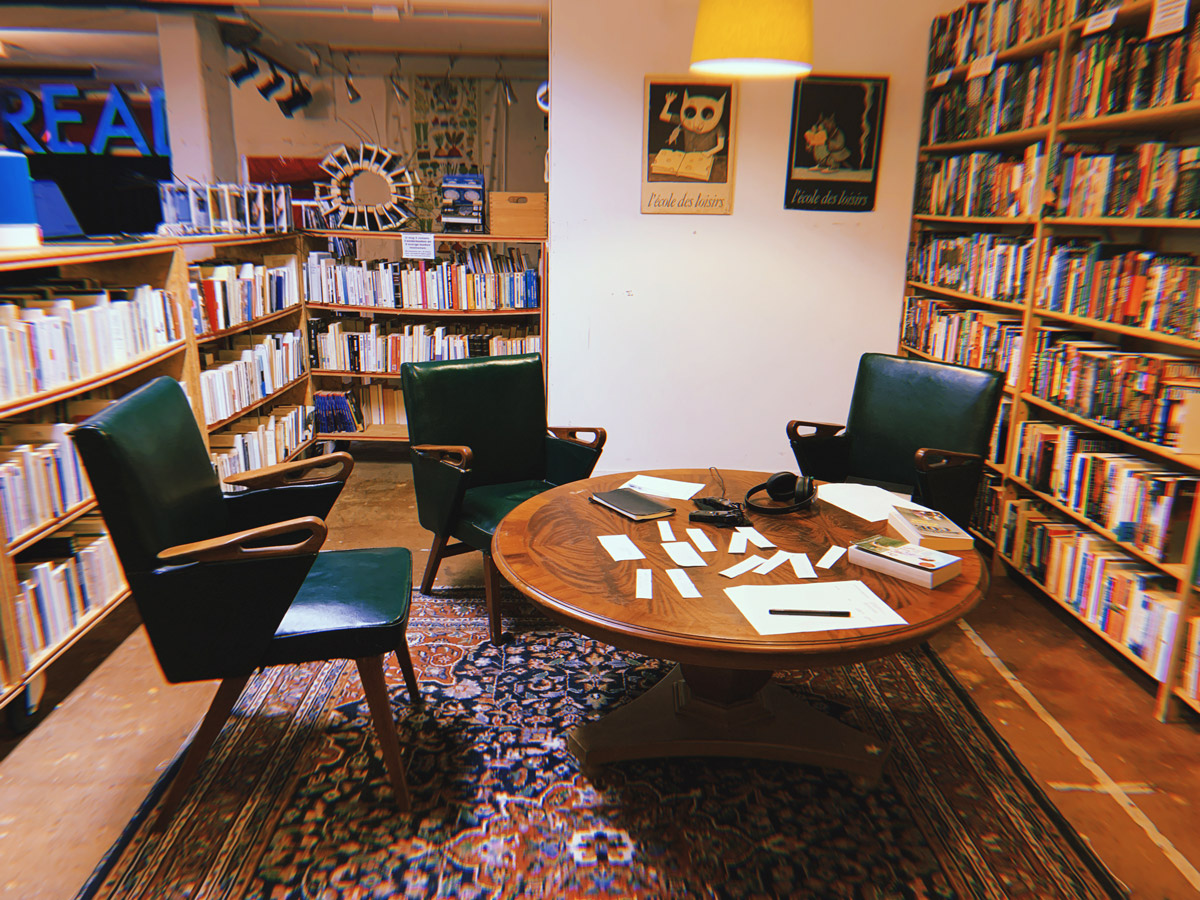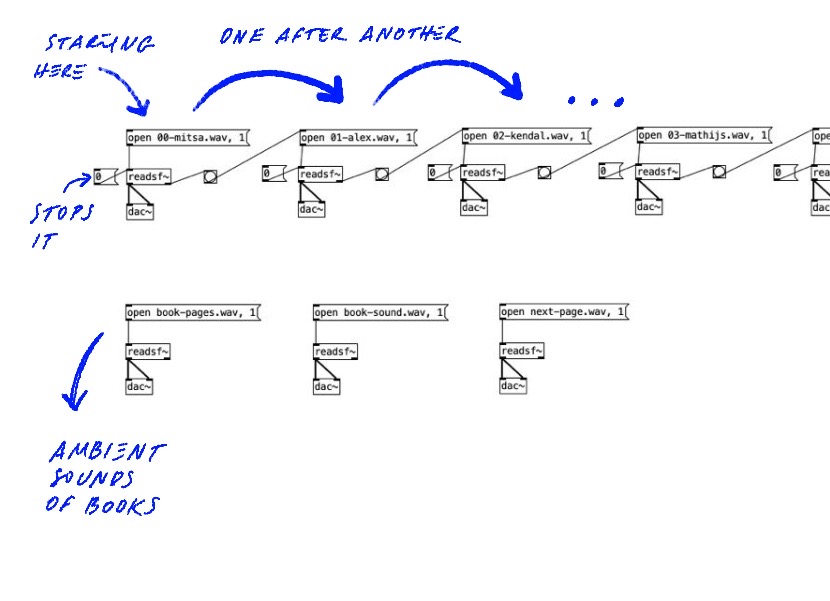Sound jams: what do books say?
sound jam #2 // what do books say?
report
_facilitators // Alexandra Nikolova and mitsitron
_dates // 17-10-2022
_location // Leeszaal, Rotterdam
_number of contributors // 12
_format // workshop
_instruments // two Zoom H1 Handy stereo recorders, voices, room ambience
_schedule // 2 hours. Each contributor took around 7-10 minutes.
_process // The structure of the sound jam was to invite the contributors to join one after another. It took place in a cosy corner of the library over a round table and three armchairs where the two facilitators and one contributor were seated. A contributor listened to the recording of the previous one, reflected upon it and then made another recording in response to what they listened to. In order to start the jam, the two facilitators recorded the first two pieces. The invitation was to pick a book from a shelf and read a paragraph of their choice. The second facilitator listened to the first one’s recording, reflected for a little while about its content and then picked another book that for them responded to what they listened to. There were a few rounds like that until the facilitators opened the instructions to "respond to the previous audio by recording anything". As a result, the next contributor decided to record sounds from the room. The same approach continued for a few rounds until another contributor wanted to read from the books again.
The first moment of publishing of the sound pieces happened on spot via a sound installation. A small speaker was subtly hidden between the books in the library and each new recording was added to the queue. The visitors of the library were discovering the readings and sounds while walking by the particular spot. The second publishing moment was an edited audio mix with all of the contributions, made by the facilitator with the contributors’ consent.
_observations // The structure of this sound jam allowed the facilitators to play the role of editors and publishers of the final sound publication. The contributors were aware of the process and enjoyed listening and responding with an audio recording. They found the sound jam accessible, allowing them to use sound as a medium even though not many of them worked with it before. Some of them used their voice to produce the sonic piece, while others preferred to record a soundscape in the room or other people talking. The process was quite strict but at the same time, gave them the freedom to choose how to approach the assignment and that made them content with the experiments and their recordings. With this structure, the contributors only could hear the recording before them and they do not know who are the other makers in this sound publication. Thus, everyone had the same role as a contributor, with the exception of the two facilitators. The sound jam was accessible and inclusive as such and without the need to work on creating a specific group dynamic and putting people in the same place at the same time. The participants enjoyed the process of listening to the creation of someone else and responding to it.
▶ documentation pad
Thanks to all of the contributors to this sound jam
makers // mitsitron [Mitsa Chaida], Kendal Beynon, Mathijs, Stephen Kerr, Aglaia Petta, Irmak Ertaş, Boyana Stoilova, Kimberley Cosmilla, Michael Murtaugh, Angeliki Diakrousi, Simon Browne, and Ål Nik [Alexandra Nikolova]
publication
_version 1 // audio live mix with Pd // The first try for mixing the audio contributions and playing them one after another was done with Pure Data. No matter with which one we start, they will played in the right order afterwards. I also added some additional sounds that could be started and stopped at any time - of books' pages being turned.
_version 2 // part of the Sound Jams: Deluxe Edition // tba
// back to Sound jams

